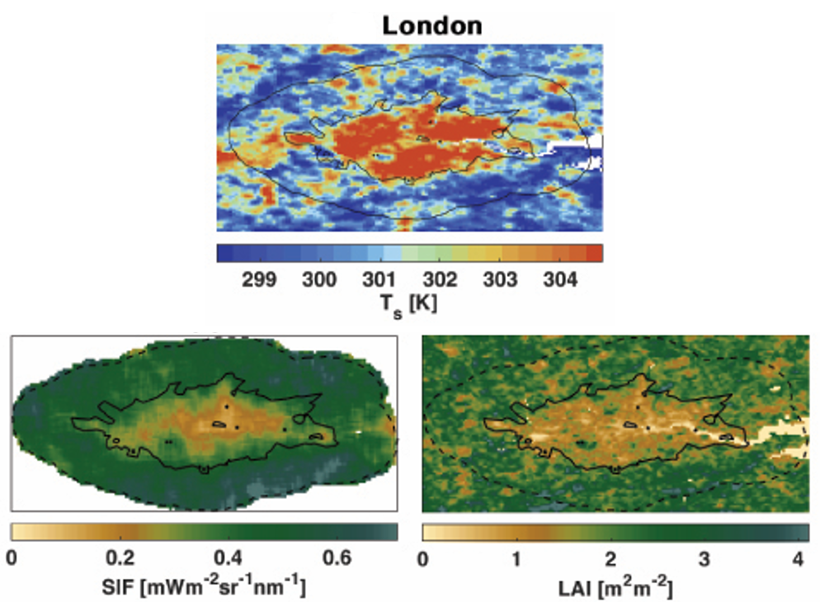Source: AGU Advances
Higher temperatures in urban areas expose a large fraction of the human population to potentially dangerous heat stress. Paschalis et al. [2021] use state-of-the-art satellite data for 145 city clusters to disentangle the drivers of surface Urban Heat Island intensity (SUHI) and to quantify urban-rural differences in vegetation cover, species composition, and evaporative cooling.
Daytime SUHIs are highly correlated with vegetation characteristics and the wetness of the background climate. Magnitude and seasonality of daytime SUHIs are controlled by urban-rural differences in plant transpiration and leaf area, explaining the dependence of SUHIs on wetness conditions. Urban vegetation is the most important factor regulating SUSIs. A reduction in the fraction of forested areas in cities, leads to a strong decrease in leaf area index and a weaker evaporative cooling.
These results highlight the importance of preserving urban forests as natural reserves, rather than simply “greening” cities for reducing the daytime surface urban heat island effect.
Citation: Paschalis, A., Chakraborty, T., Fatichi, S., Meili, N. & Manoli, G. [2021]. Urban forests as main regulator of the evaporative cooling effect in cities. AGU Advances, 2, e2020AV000303. https://doi.org/10.1029/2020AV000303
—Donald Wuebbles, Editor, AGU Advances
Text © 2021. The authors. CC BY-NC-ND 3.0
Except where otherwise noted, images are subject to copyright. Any reuse without express permission from the copyright owner is prohibited.

